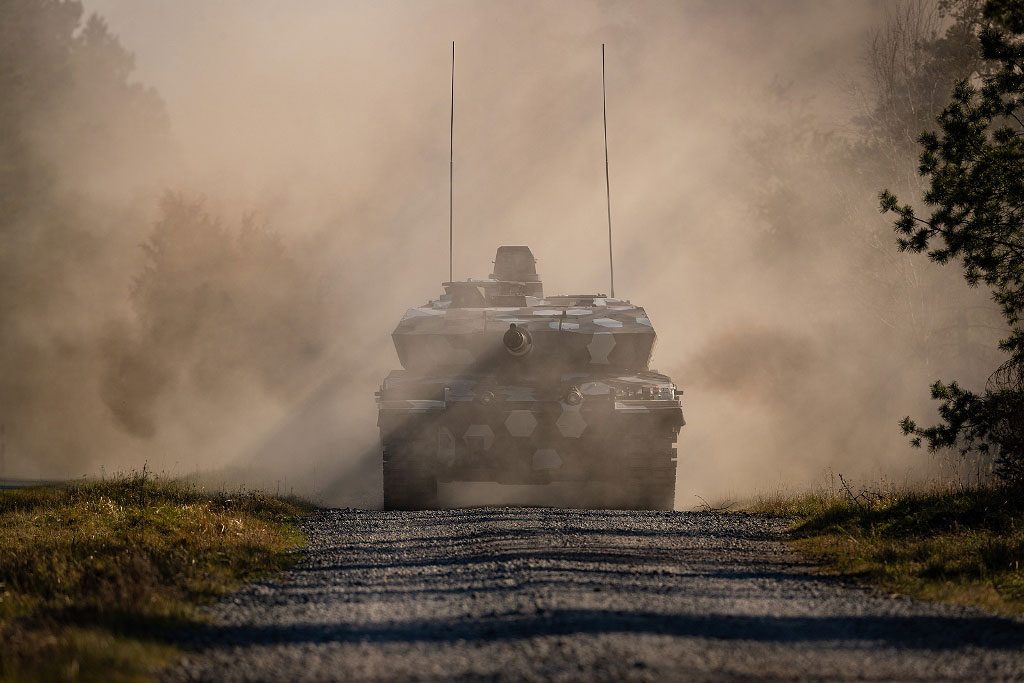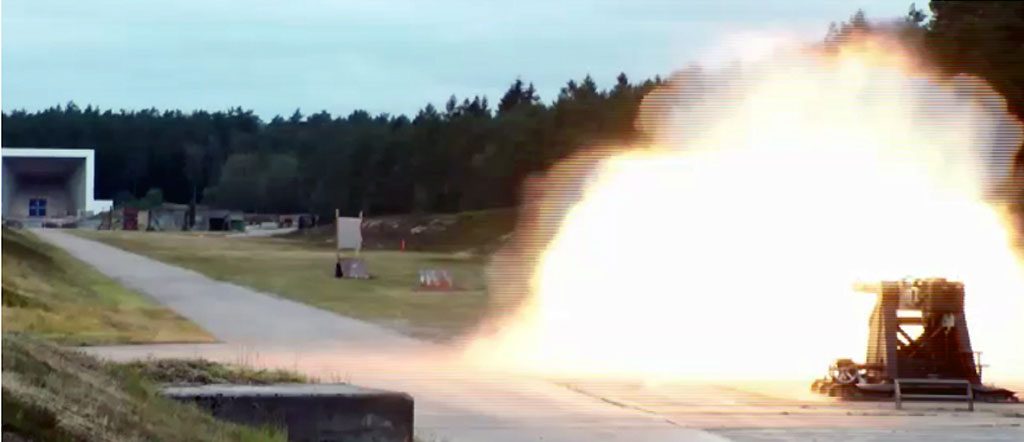
The development work 2016-2020
Considering the development timeline of the MGCS, and knowing that developing a weapon system such as a new tank gun with its ammunition takes around 10 years, the Rheinmetall team based at Unterlüss started an intense test and development work as soon as the 130 mm demonstrator was back from Eurosatory in mid-2016. The first task was to verify the increase of performances, over 50% compared to 120 mm systems, the accuracy, and the compatibility with the weight limit considered for future MBTs. Penetration performances were assessed against NATO targets representing current threats (each costing 45,000 €), simulations being carried out shooting at 100 meters distance while reducing the charge to simulate a 1,000 meters range. As for accuracy tests, “eight rounds fall in an A3 [297 × 420 mm] sheet since the beginning of the development,” Christoph Henselmann unveils, adding that this was much better than the initial results in the 120 mm development programme. Rheinmetall engineers have a clear idea on how to proceed to further improve accuracy, “which might even bring us to downsize those solutions to further optimise existing 120 mm guns.”

From 2016 until now much effort was put in analysing data obtained with the aforementioned expert tool, in carrying out several live firing campaigns, optimising internal ballistic, the main effort being as said improving precision. Another key element was developing the autoloader, the adoption of such a system leading to a complete redesign of the breech block. This included the production of two new prototype weapons of new design, fitted with a bore evacuator, as Rheinmetall wants to have the option of a gun system apt to be used also in manned turrets. The company carried out a thorough market study on autoloaders and assessed that the most suitable existing system was produced in Southern Asia (not South Korea), Rheinmetall starting discussions with that company to find an agreement for a common development. However limits in transfer of technology from that country would not allow to meet the gun system development timeline, therefore in mid-2017 it was decided to develop the autoloader in-house, exploiting the skills of Rheinmetall Air Defence in the medium calibre field. The Swiss-based branch of the company accepted to expand its expertise into large calibre systems, and according to Mr. Walter the development went on in a very productive way bringing to the development of a functional demonstrator in the 2018-19 timeframe. “The only problem will be to convince customers that with an unmanned turret all rounds must be hosted in the turret, which means that 20-22 rounds will be available, as a bigger ammunition magazine for the autoloader would not be system compatible in terms of turret dimensions and hence added armour weight,” Christoph Henselmann explains, and this means less than half the available rounds on current four-man crew tanks. “Since early 2020 the autoloader has been transferred to Unterlüss and has been connected to the gun for testing, and in fall 2020 it was used on the firing rig for live firing. “We still see some challenges in its development, but we are not facing major hurdles,” Mr. Henselmann says, explaining that problems should be overcome to cope with the MGCS development timeframe.
Comparing pressure levels in the L55A1 gun and in the 130 mm L52 prototype, Extreme Service Condition Pressure climbs from 700 to 800 MPa, Permissible Maximum Pressure from 735 to 850 MPa, Design Pressure reaching 880 MPa compared to the 760 MPa of the 120 mm system, an average increase of 15%, with a chamber volume of “15+X” litres compared to the 10.2 litres of the 120 mm solution, the “X” leaving the door open to further refinements. The higher pressure of course requires the use of different material as all components, including ammunition elements such as primers, have to be pressure-hardened to withstand new operating pressures.
Photos courtesy Rheinmetall


